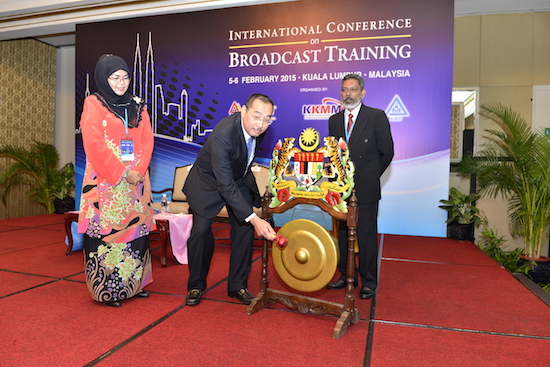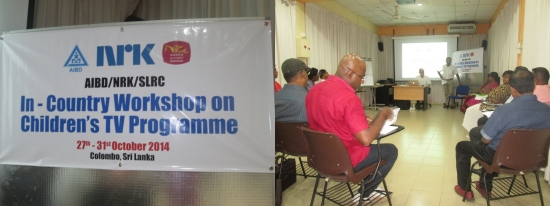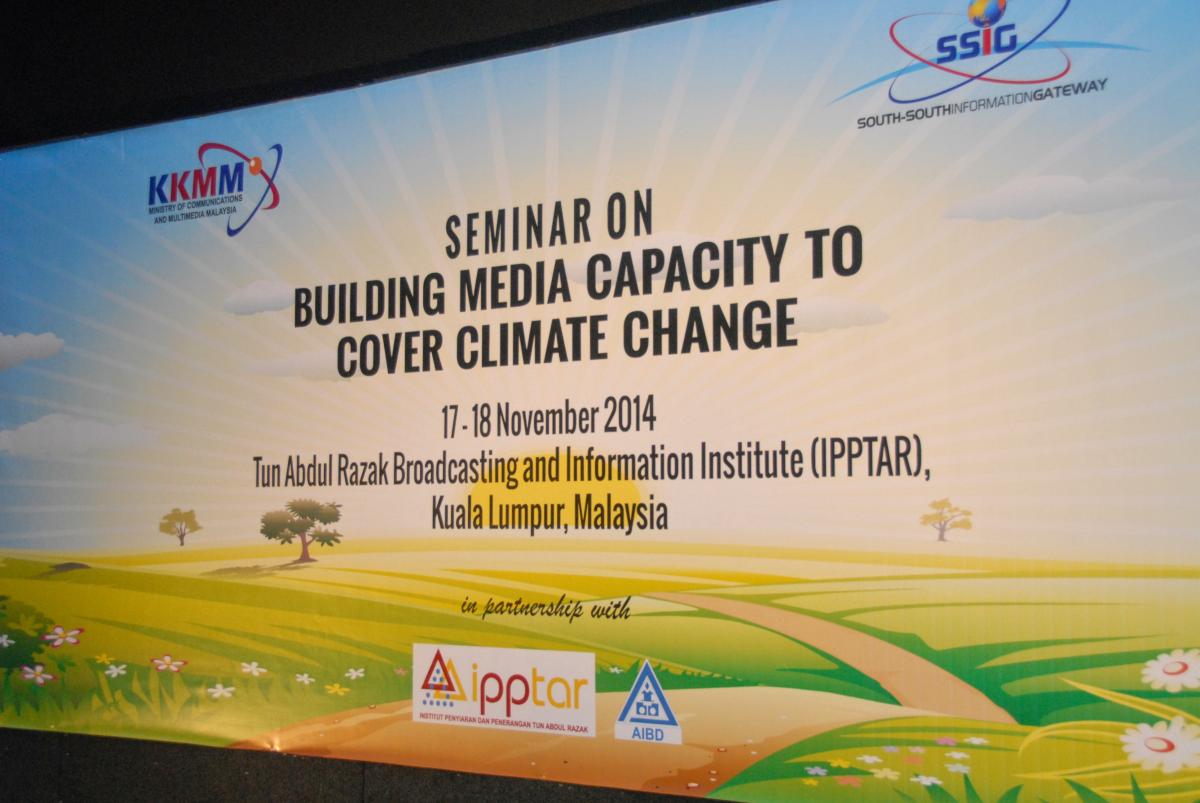How to integrate value added services with creative content that’s available on air is a key factor in drawing investors to allocate more resources to create good programmes.
How to integrate value added services with creative content that’s available on air is a key factor in drawing investors to allocate more resources to create good programmes.
“Much has yet to be done in this integration issue”, according to Mr. II George, Additional Director General (Training), of the National Academy of Broadcasting and Multimedia, India, one of the speakers on ‘Technological Innovations and Trends Impacting Creative Content Production’at the 3rd International Conference on Broadcast Training in Kuala Lumpur.

In his presentation, Mr. George identified some of the new technologies available to content producers such as the rise of social media, second screen technology, smart phones, IPTV, Integrated Broadcast Broadband, HbbTV, OTT, smart TVs, game consoles and tablets.
What should broadcasters try in production amidst new technologies? Mr. George suggested the use of animation and graphics, virtual sets and character, multiple layers, file storage of operational set up, multi track recording and post production from different locations, macro programmes, social interaction, and hybrid workflows.
Mr. Jeewa Vengadasalam, Specialist at the Department of Electrical and Electronic Engineering, Universiti Tunku Abdul Rahman, Malaysia, also spoke at this session and examined the latest trend in drone journalism.
In the US, he said that broadcasters are increasingly using drones with 4 to 8 rotors or propellers that provide a bird’s eye view of a news event.
“Drones have advantages such as stable and vibration free HD images, wireless broadcasting, effectivity at close range and long range and real time viewfinder image to all ground stations,”Jeewa pointed out.

However, he said, broadcasters need to contend with issues dealing with drone journalism. These issues cover costs as drones’battery last only between 20 and 40 minutes, compliance with aviation rules, interference with spectrum parameters, field reporting competency, safety and ethics on privacy.
With more content and technological advances available to broadcasters, drone journalism is a new approach to content creation that provides a good bird’s eye view.

Technological Innovations
How to integrate value added services with creative content that’s available on air is a key factor in drawing investors to allocate more resources to create good programmes.
Story telling Techniques
Broadcasters from 19 countries in Asia-Pacific, Europe, and Africa generated
Art of Good Storytelling
Ms. Poonam Sharma, Director of Singapore MediaGuru, urged broadcasters to relearn the art of good storytelling, and stressed that winning in today’s multimedia landscape means not only creating a story that is relevant and interactive, and one that provokes and engages audiences, but also delivering or executing it creatively.
Dealing with Multitaskers
As media becomes more complex, broadcasters need to understand that individuals and communities are increasingly using various media simultaneously and interacting, and such multitasking has had an impact on how they engage with individual task or activity.
Future of Broadcasting
The future of broadcasting lies not only in producing creative content that is relevant, innovative, and engaging, but also in adopting formats that keep pace with the demands of various platforms and shifting audience preferences.
Demand for Creative Content
Dato’ Jailani Johari, Honourable Deputy Minister of Communications and Multimedia Malaysia, has urged broadcasters to be open and present non traditional approaches based on best experiences of their home regions in providing training to meet the demand for creative content.
AIBD/NRK/SLRC In-Country Workshop on Children’s TV Programme
From 27 to 31 October 2014, Sri Lanka Rupavahini Corporation (SLRC) hosted an in-country workshop on Children's TV Programme in Colombo, Sri Lanka.
AIBD/TVRI In-Country Consultation on Social and Emerging Media
AIBD/TVRI in-country consultation on Social and Emerging Media for Broadcast Management was held from 25 - 27 November 2014 in Jakarta, Indonesia.
IPPTAR/KKMM/AIBD Successful Seminar on Building Media Capacity to Cover Climate Change
The Ministry of Communication and Multimedia, Malaysia (KKMM), in collaboration with the Tun Abdul Razak Broadcasting and Information Institute (IPPTAR) and the Asia-Pacific Institute for Broadcasting Development (AIBD), organised the Seminar on Building Media Capacity to Cover Climate Change in Kuala Lumpur from 17-18 November 2014. Climate change is a global phenomenon with far-reaching ramifications, requiring action from a variety of stakeholders, such as policymakers, civil society and the media.
Successful 3rd MINI-INPUT in Hanoi
Following the 8th INPUT Conference held in Helsinki in May 2014, the Goethe-Institut organised the 3rd MINI-INPUT from 25 to 27 September 2014 in Hanoi, Vietnam, hosted by Vietnam Television (VTV).









